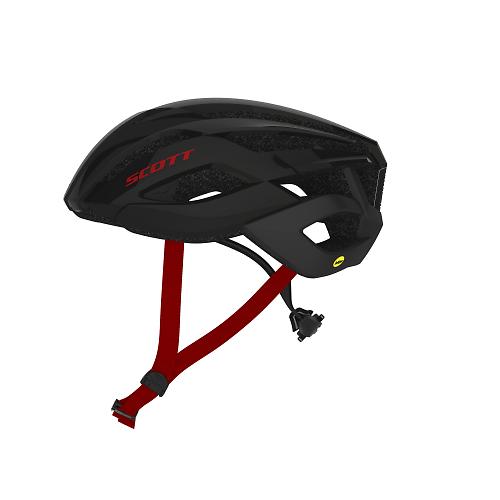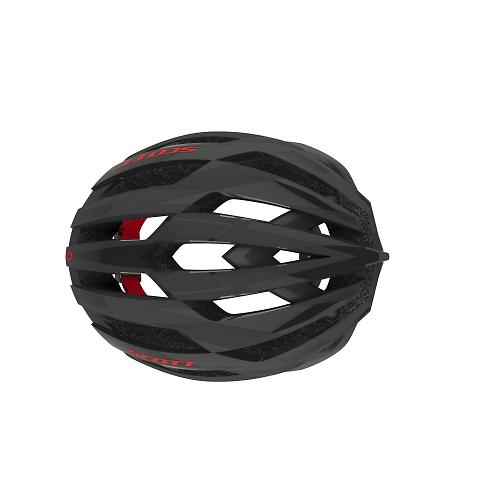- News
- Reviews
- Bikes
- Components
- Bar tape & grips
- Bottom brackets
- Brake & gear cables
- Brake & STI levers
- Brake pads & spares
- Brakes
- Cassettes & freewheels
- Chains
- Chainsets & chainrings
- Derailleurs - front
- Derailleurs - rear
- Forks
- Gear levers & shifters
- Groupsets
- Handlebars & extensions
- Headsets
- Hubs
- Inner tubes
- Pedals
- Quick releases & skewers
- Saddles
- Seatposts
- Stems
- Wheels
- Tyres
- Tubeless valves
- Accessories
- Accessories - misc
- Computer mounts
- Bags
- Bar ends
- Bike bags & cases
- Bottle cages
- Bottles
- Cameras
- Car racks
- Child seats
- Computers
- Glasses
- GPS units
- Helmets
- Lights - front
- Lights - rear
- Lights - sets
- Locks
- Mirrors
- Mudguards
- Racks
- Pumps & CO2 inflators
- Puncture kits
- Reflectives
- Smart watches
- Stands and racks
- Trailers
- Clothing
- Health, fitness and nutrition
- Tools and workshop
- Miscellaneous
- Buyers Guides
- Features
- Forum
- Recommends
- Podcast
TECH NEWS
Scott Bikes launch new Arx Plus helmet with MIPS safety technology + video
Scott is putting safety first with the release of the new ARX Plus road helmet in 2015, their first road helmet incorporating MIPS (Multi-directional Impact Protection System) technology.
MIPS integrates a low friction layer between the helmet shell and liner, and is claimed by its Swedish inventors to reduce the amount of rotational force transferred to your brain. The video below shows some results of a MIPS helmet compared to a regular one.
Says the MIPS website: "The secret behind MIPS’ unique, patented technology comes from the human brain. The brain is surrounded by a low-friction cushion of cerebrospinal fluid that protects it by allowing it to slide slightly on impact. MIPS imitates the brain’s way of protecting itself by giving the helmet its own low-friction layer between the outer shell and the liner, which also slides to absorb much of the energy created by an angled blow to the head."
MIPS is proving really popular with helmet manufacturers at the moment, with many releasing a MIPS helmet model for 2015. We saw new models with the technology from Lazer, Smith, POC, Giro and Bell at Eurobike last month, and we expect to see many more added in the near future. You can see the full list over at the MIPS website

The MIPS technology adds only a small weight penalty, the Arx Plus weighs a competitive 260g. It’s well ventilated with “strategically placed” outer vents funnelling air through inner cooling channels.

A Micro Rotary Adjustment System II retention system clamps the helmet securely to the head and offers a wide range of adjustment and claimed comfort. A micro-dial operates the retention system.

The Arx Plus helmet is available in three sizes (small, medium and large) and two colours. No word on pricing yet. More at www.scott-sports.com
David worked on the road.cc tech team from 2012-2020. Previously he was editor of Bikemagic.com and before that staff writer at RCUK. He's a seasoned cyclist of all disciplines, from road to mountain biking, touring to cyclo-cross, he only wishes he had time to ride them all. He's mildly competitive, though he'll never admit it, and is a frequent road racer but is too lazy to do really well. He currently resides in the Cotswolds, and you can now find him over on his own YouTube channel David Arthur - Just Ride Bikes.
Latest Comments
- PRSboy 22 min 41 sec ago
I came here on a small boat from the Road Cycling UK forum after that croaked a few yrs ago.
- mctrials23 34 min 33 sec ago
I don't see why not. If we are going by the parlance of the youth these days then your gran going down the shops is iconic. Even by the standard...
- Rendel Harris 1 hour 2 min ago
No telling from that chart where the components ultimately end up, of course, if they go to Europe or Taiwan and then are put on bikes that are...
- A V Lowe 1 hour 3 min ago
The huge problem is the misues of the term pavement - I've cycled & driven cars on pavements for the past 61 years - their legal status is ...
- OldRidgeback 2 hours 35 min ago
The sentence does seem rather light. I hope the victim sues the driver heavily and wins a massive payout. The insurance firm would cover this but...
- OldRidgeback 2 hours 40 min ago
I bought my first MTB at Brixton Cycles decades ago and it's still in use as my hack. I've also bought bikes from there for my sons. I've had...
- chrisonabike 3 hours 4 min ago
So what you're saying is the "baseline" would move from "lit up like a Christmas tree" to "like a chameleon at a rave" * ... and it would have...
- Oldfatgit 4 hours 41 sec ago
Thank you for asking Aidan, much appreciated....
- ktache 12 hours 59 min ago
And I liked endura too. Got a nice long sleeve mostly merino long sleeve a little while back, in orange.
- matthewn5 13 hours 27 min ago
No, the Ebay lights have been around for several years, this Lezyne light just appeared.






Add new comment
3 comments
And thankfully not "aero" design
Road.cc readers - any thought on these two counter points to MIPS?
http://www.helmets.org/bicyclingmag1305.htm
http://www.helmets.org/mips.htm
As always, everyone has their own stance and the hard part is balancing the arguments and pulling out the facts that matter...
From a physics point of view, i'd have thought that the extra slip plane that MIPS provides could, in theory, give an additional amount of time for the head to decelerate. Given that that seems, according to some research, to be one of prime factors with regard to concussions - rather than just a simple model of the brain bouncing back and forth in the skull - it might be useful.
The first thing to do surely, would be to actually test some of that in the lab, or outside with mannequin, or both - and play with the tightness of fit and degree of slip provided by the MIPS system (or any other) *
Until then, it's a resounding 'maybe' from me about the effectiveness or not, but definitely worth looking at (IMO).
* That is to say, independently from the work done by the folk who are flogging it.